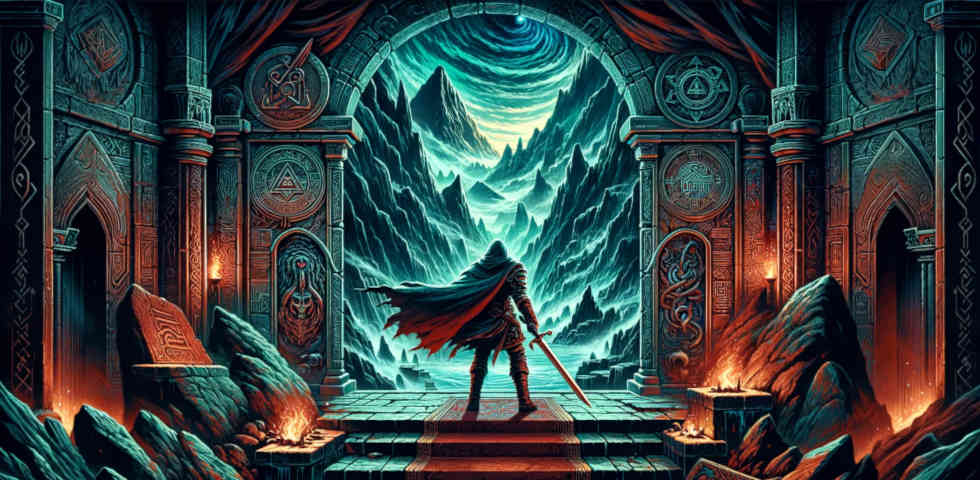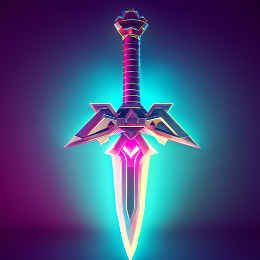Softside Magazine August 1983: Programming Challenge Awaits
Updated 1 January 2024

Introduction
In the dynamic world of 1980s computer periodicals, Softside Magazine emerges as a standout, particularly with its August 1983 issue. It's a treasure trove of the latest tech breakthroughs and significant cultural moments, perfectly capturing the pulse of an ever-changing digital era.
The SoftSide magazine had a reputation as a computer ethusiast's magazine. Delivering not just news, but a comprehensive experience. The magazine has become a staple in the personal computing scene, thanks to our unique mix of handy programming tips, in-depth software reviews, and tech news of the day, all in a reader-friendly package. The magazine offers a peek into an exciting world where technology meets creativity, at a time when personal computers are just starting to revolutionize our homes.
Here are some of the highlights from this edition of the magazine.
Information Inundation
Reflecting on the 1983 marketplace from our current, digitally-saturated era offers a unique perspective. Back then, the notion of an information deluge was just beginning to take hold, a concept almost quaint by today's standards. In an article from Softside Magazine of that era, the writer poignantly captured this burgeoning sentiment: It's everywhere! It's everywhere! Every day more and more information cascades into our lives.
Imagine this scenario in a time when the internet was still in its infancy. The writer describes a scene where various forms of media – telephones, televisions, computers, magazines, books, newspapers, and even advertising fliers – compete for our attention. This was a time when the idea of being 'always-on' and connected was emerging, and the writer humorously muses about the need for additional RAM modules for the human brain' to cope with this influx.
From our current standpoint, where digital connectivity is an integral part of our daily lives, this 1983 perspective is both insightful and nostalgic. It's a reminder of how our interaction with information has evolved dramatically. Back then, the challenge was beginning to organize and utilize this information efficiently. Today, we're navigating a world where digital information is not just cascading but often overwhelming. It's a testament to how far we've come and how the challenges of managing information have transformed over the decades.
Sony Videodisc
Looking back to the early 1980s, we witness the dawn of an era with the introduction of the Videodisc into the consumer market. Prior to this, the interactive videodisc technology had been confined to industrial applications since 1978. But in 1983, a pivotal moment arrived as these devices became accessible to the general public due to a drop in prices.
Today, as we are surrounded by advanced digital storage and streaming technologies, it's fascinating to revisit the initial challenges of this groundbreaking technology. The primary hurdle, similar to many information technologies of that time, was the development of sufficient software to integrate these devices into daily life.
In our exploration of this vintage technology, we focus on the Laser Vision format, standing out for its advanced design compared to the less expensive, but limited, CED (Capacitance Electronic Disc) and VHD (Video High Density) formats. LaserVision discs stored data as pits on an aluminum-plated core, encapsulated within a transparent plastic disc. These pits were read by a low-powered laser, translating into a capacity of 54,000 still frames or 30 minutes of video per disc side, though manufacturing limitations slightly reduced this capacity.
Interestingly, at that time, laserdiscs were only capable of read-only functions. However, developments were already underway, with a Japanese company revealing a prototype for a laserdisc recorder, hinting at the future of writable laserdisc technology. Despite the permanence of the 'writing' process, due to the laser physically creating the pits, the vast storage capacity and high-speed access offered by this technology marked a significant leap forward.
It is clear how these early steps in digital storage technology laid the groundwork for the sophisticated systems we enjoy today. The journey from the Videodisc to our current state of digital media is a remarkable testament to the rapid evolution of technology over the past few decades.
Technology Special Effects in Hollywood Blockbuster Movies
Computer-generated imagery (CGI) is a staple in animation, hoverer, it's fascinating to reflect on its early days in the mid-1980s. During this period, computers began revolutionizing animation, not by replacing human artists, but by enhancing their capabilities. The artists were still the heart of the creative process, crafting original artwork. However, computers provided significant assistance, speeding up the workflow and eliminating repetitive, monotonous tasks.
In those days, an artist would use a special pen connected to the computer, drawing original scenes and characters. This process was mirrored on the computer's screen, seamlessly integrating the artist's work into digital format. Choosing colors became a simple task of selecting from an on-screen palette, allowing the computer to automatically fill in the selected areas. This technological advancement marked a significant shift from traditional methods, where such tasks were done painstakingly by hand.
Perhaps most revolutionary was the computer's ability to generate 'inbetweeners,' the frames that create the illusion of motion. Where artists once had to draw each frame manually to depict movement — a laborious process — they now needed to create only the key frames. The computer would then fill in the rest, ensuring smooth transitions and lifelike motion. This not only saved countless hours but also opened up new possibilities in animation, paving the way for the sophisticated, digitally-driven techniques that are now commonplace in the industry. PB Pressbooks gives a fascinating and detailed in their CG Historical Timeline article.
Escape from the Dungeons of the Gods
In a world ruled by the tyrannical King Safuis II, a group of brave rebels, including you, has been captured. Imprisoned in the darkest depths of the infamous Dungeon of the Gods, your quest for freedom begins in the shadow of despair. Outside these cold, stone walls, the king's ruthless forces spread fear and destruction among the people. It's up to you to break free and lead the fight against this merciless reign.
Legend whispers of an ancient artifact hidden within this maze of terror – the Chest of the Gods, a relic of immense power, capable of vanquishing the king and his merciless army. But beware, for this dungeon is not just a prison. It's a lair where fearsome monsters guard treasures untold, challenges that will test your courage and strength to their very limits.
Arm yourself with bravery, for you are the chosen one. The fate of the rebellion rests in your hands. May the blessings of the gods guide you through the perilous paths and lead you to victory. This is not just an escape; it's a battle for freedom, for justice, for the future of your people. The time is now. Take courage, and let the legends come to life!
I discuss my thoughts on modern interactive fiction in my article, Interactive Narrative: From Amiga's D&D to Baldur's Gate 3. The Interactive Fiction Database has a more detailed explanation and summary of the game. You can also play the game, without having to type in the source code, directly from the browser at the Internet Archive.
References
- SoftSide Magazine, August 1983 — available from Archive.org
- CG Historical Timeline, PB Pressbooks
- Escape from the Dungeon of the Gods, the Interactive Fiction Database
- Escape from the Dungeon of the Gods, SoftSide Magazine







